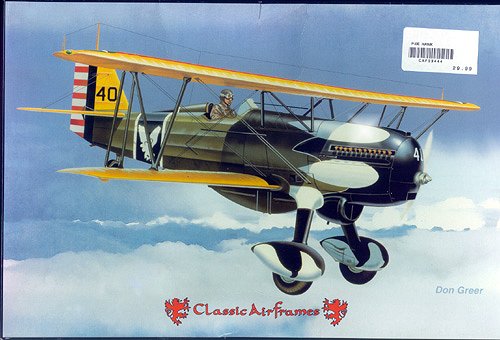
|
KIT: |
Classic Airframes 1/48 P-6E 'Hawk' |
|
KIT # |
4xx |
|
PRICE: |
$29.95 |
|
DECALS: |
Two aircraft |
|
REVIEW & |
Terry Miesle |
|
NOTES: |
Short run kit with resin bits |

|
HISTORY |
In the eyes of the newly maturing U.S. Army Air Corps the
Curtiss and Boeing aircraft companies were ideal competitors. These two
manufacturers featured design teams which truly seemed to understand the demands
of military aviation. Seemingly long gone were the days of fragile
stick-and-canvas airplanes. Radial engines were giving way to inline
engines, cooled with a marvelous new fluid, Prestone, providing far more
efficient cooling of engines. The landing gear featured the newfangled
oleo-strut shock absorbers, which promised increased safety and greater aircraft
frame longevity. Experiments with superchargers started at this time, too,
providing a glimpse into the future of aircraft engines. This was the
environment of 1927, the year the XP-6 was born.
In 1930, during the Great Depression, military experimentation continued under a
tighter budget. Conflicts around the world dictated that the U.S. should
not fall behind in aircraft technology, however, and the Curtiss Aircraft
Company continued work at the behest of the USAAC. The P-6E was largely
the same airframe as earlier P-6 variants, but aerodynamic changes included
spatted wheels and a larger tailplane. A 600 hp V-1570-25 Wright Conqueror
engine replaced the supercharged engines of the P-6D variants, and allowed a
smaller radiator with Prestone coolant. It was armed with the standard
dual .30caliber machine guns, mounted in the fuselage just below the exhausts.
The XP-6E was enthusiastically received by the USAAC its top speed was 198mph,
with a service ceiling of 24,700 feet. It compared favorably with its main
competitor, the Boeing P-12 which was slower, but more maneuverable and
possessed a greater rate of climb thanks to its 700lb lighter radial engine.
In 1931 production began, and eventually forty-six aircraft would be delivered.
Twenty-seven of these would eventually be destroyed in accidents. The P-6E
would be withdrawn from active service in 1939 with the bulk of the remaining
aircraft donated to civil flying schools as non-flying training aids.
Eventual supercharger experiments would allow a P-6E variant to achieve 225mph.
The P-6E aircraft received some of the most imaginative and colorful paint
schemes ever seen on U.S. active-duty aircraft. These planes were as much
public relations as they were offensive weapons. Throughout the summer
army pilots would fly their steeds at airshows, showing the public where their
scant tax money was being spent. Among these pilots was Jimmy Doolittle,
who provided great services to the Curtiss Aircraft Company. These shows
were thrilling affairs, and showed off the newest technology as we still do
today. The paint schemes like the snow owl motif offered in the kit were
very difficult to maintain, and only lasted a few years.
I was enthralled by the Curtiss P-6E at the USAF museum in Dayton, Ohio. It has long been one of my favorite aircraft, in part because it features a very attractive color scheme on what is obviously an advanced fighter aircraft. The guns are barely noticeable beneath the unusual exhaust stacks, but provide an unmistakable sign that this is a machine of war.
|
THE KIT |
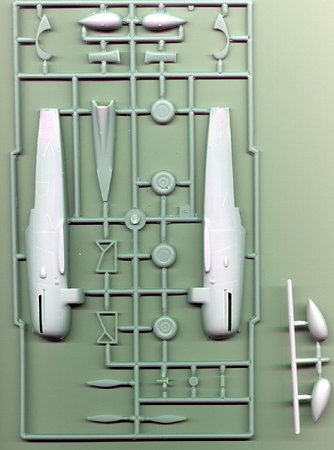 |
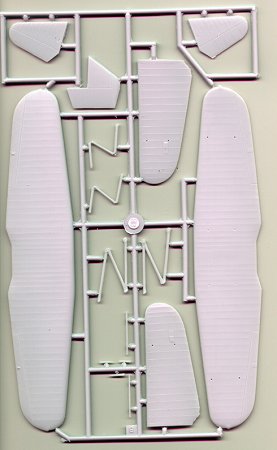 |
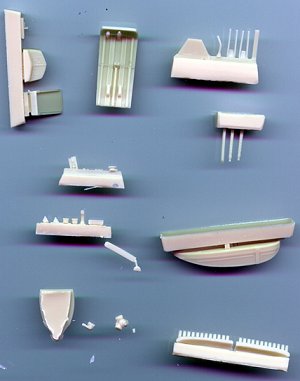 I've become a big Classic Airframes enthusiast over the last several years. The
kits continue to improve, and now feature resin details instead of photoetched
parts, and much thinner plastic parts than older kits. If you only have
experience with their older kits, you will be pleasantly surprised. That
being said, it is still a biplane, and having built the Curtiss Hawk III, I can
tell you putting the wings together will not be easy for inexperienced builders.
I've become a big Classic Airframes enthusiast over the last several years. The
kits continue to improve, and now feature resin details instead of photoetched
parts, and much thinner plastic parts than older kits. If you only have
experience with their older kits, you will be pleasantly surprised. That
being said, it is still a biplane, and having built the Curtiss Hawk III, I can
tell you putting the wings together will not be easy for inexperienced builders.
In the box you'll find a bag of finely cast resin parts. My copy had no
defects in evidence, and when you see the exhausts, you'll be impressed. I
would have preferred to see those exhausts packaged separately for protection,
but they survived shipping fine. There are two sprues of injection-molded
grey plastic. I didn't find any ejector pin marks or other glaring
problems, though there is a bit of flash to be cleaned up and there are a number
of depressions in compound curves which will require filling. I would have
preferred resin wheels than the plastic ones, but they'll be inside the spats
anyway.
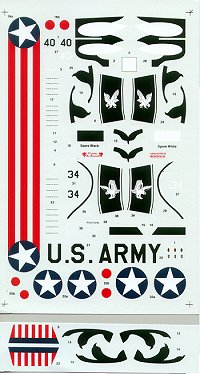 The main wing is molded in two halves, the tailplanes and lower wings are
single-pieces. You have the option of partial or fully enclosed main gear
spats, the later versions of the aircraft used the partial spats, as mud
continually built up in the full spat.
The main wing is molded in two halves, the tailplanes and lower wings are
single-pieces. You have the option of partial or fully enclosed main gear
spats, the later versions of the aircraft used the partial spats, as mud
continually built up in the full spat.
The instructions are better than those in the Hawk III but you would be
well-advised to obtain reference pictures, particularly when rigging the wings.
Overall, I'd say they are sufficient, but Classic Airfames has always been a bit
light in this area.
The decals are artful, as are the typical color guides. You get the option
of a snow owl aircraft of the group commander with the plumage and upper wing
color bars, and a basic 17th Pursuit Squadron aircraft from 1932. To
achieve the group commander aircraft a masking template has been included.
Overall I'm very happy with the kit as it sits in the box, the only other 1/48 P6-E kit available is a collector's item: the Aurora kit. (Editor's Note: Lindberg also does a 1/48 P-6E that is released from time to time.) I've wanted to build this aircraft for many years. With the kit you can depict one of many variants of the P6-E, should you choose to modify the engine.
|
REFERENCES |
Curtiss Army Hawks in Action; Squadron/Signal Publications #1128
If you would like your product reviewed fairly and quickly by a site that averages over 3,000 visits a day, please contact me or see other details in the Note to Contributors.